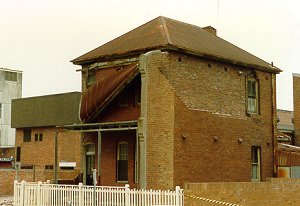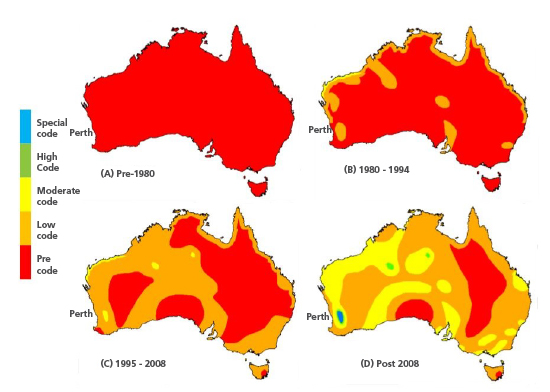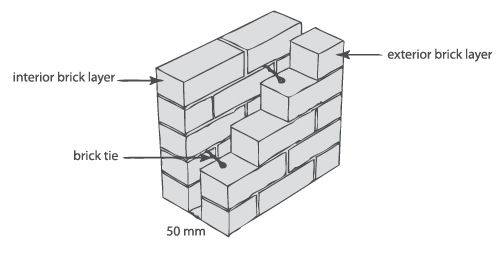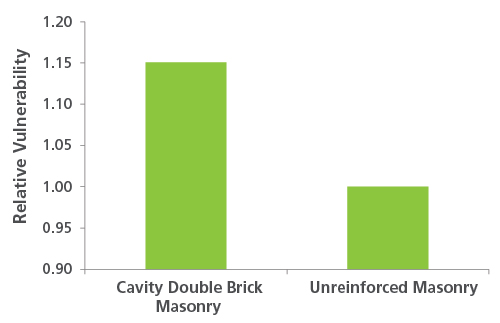
Assessing the Seismic Vulnerability of Australia’s Building Stock
Jul 19, 2012
Editor's Note: In this article, AIR research engineer Dr. Arash Nasseri describes several recent enhancements to the vulnerability component of the AIR Earthquake Model for Australia, which will yield more accurate loss estimates and an improved understanding of regional variation in building vulnerability in Australia.
Located far from the edges of the Indo-Australian plate, the Australian continent would seem well-insulated from the tectonic interactions that give rise to earthquakes. However, historical and paleoseismological data show that damaging earthquakes have occurred in Australia in spite of its distance from plate boundaries. Even earthquakes of moderate magnitude are capable of causing extensive property damage and loss of life in Australia, depending on when and where they strike.
The magnitude 5.6 earthquake that struck Newcastle on December 28, 1989, highlights the vulnerability of Australian cities and towns to earthquake ground shaking. The Newcastle event caused damage estimated at AUD 4 billion (approximately USD 3 billion) 13 deaths, and 160 injuries (Geoscience Australia 2004). Many of the buildings damaged by the earthquake were unreinforced masonry (URM) structures composed of two layers of bricks, a construction type called cavity double brick masonry (see Figure 1) (Stehle et al. 2005).

Local vulnerability studies in Australia have shown that cavity double brick masonry structures are common in many cities. As is true of URM buildings generally, cavity double brick masonry is known to be highly vulnerable to earthquake ground shaking; indeed, it is among the most vulnerable within the general URM class. Therefore, to reliably estimate losses caused by seismic activity, earthquake models for Australia should explicitly account for cavity double brick masonry construction.
Other common construction types in Australia include timber frame homes with masonry or wood veneer. In commercial construction, typical building types are steel or concrete frame structures. The newly updated AIR Earthquake Model for Australia supports 47 unique construction classes, and each is different in its seismic vulnerability.
Complicating matters, the vulnerability of these construction types has changed over time, as damaging earthquakes in Australia—such as the 1968 Meckering and the 1989 Newcastle events—and other natural disasters have prompted the adoption and modification of seismic design codes. Therefore, to be robust, earthquake models must account for how the evolution of building codes and construction practices has impacted the vulnerability of a diverse building stock. The AIR Earthquake Model for Australia meets this requirement.
Assessing Seismic Vulnerability in Australia
As noted previously, the recently updated AIR Earthquake Model for Australia supports 47 unique construction classes and further divides buildings of each class by height (low-rise, mid-rise, and high-rise)—and by the year they were built. As aptly illustrated by the 1990 requirement that metal ties in CDBM walls be made of stainless steel, the vulnerability of Australia's building stock has changed during the past few decades. By capturing building age, the model captures the impact of changing construction standards and building codes.
In the AIR model, buildings are classified by their seismic resistance as prescribed by seismic design codes. Although there exists a variety of metrics for determining seismic resistance (or building vulnerability), AIR uses design base shear as the primary variable (see Table 1). (Other design provisions, such as ductility, detailing, and construction quality, are also considered).
The base shear coefficients shown in Table 1 represent the shear force (or lateral load) that the buildings are designed to resist, normalized by their weight. For example, buildings assigned to the "high code" class are those that should resist lateral loads of between 15% and 22% of their weight.
| Vulnerability Class | Vulnerability Class Description | Relevant Base Shear Coefficient* |
|---|---|---|
| Pre-Code | Buildings are designed with no seismic considerations, such as non-engineered buildings | < 0.035 |
| Low Code | Buildings are designed with minimum seismic considerations | 0.035 – 0.09 |
| Moderate Code | Buildings are designed with moderate seismic considerations | 0.09 – 0.15 |
| High Code | Buildings are designed with stringent seismic considerations | 0.15 – 0.22 |
| Special Code | Buildings are designed with very stringent seismic considerations | > 0.22 |
*These values are determined for a typical mid-rise engineered building (ordinary reinforced concrete frame)
How the distribution of Australia's building inventory across these vulnerability classes has changed over time was the focus of an extensive research effort at AIR. To capture this evolution, four age bands ("Year Built") are supported in the model: Pre-1980, 1980—1994, 1995—2008, and 2009—present. These bands reflect the timing of the revision and adoption not only of seismic building codes, but also of other relevant building code updates.
For example, AIR separates pre-1980 and post-1980 structures on the basis of their compliance with Australia's first seismic design code (implemented in 1979), and also on the basis of their implicit seismic resistance. Few regions of Australia were required to follow the 1979 seismic design code, and even fewer actually implemented it. However, in 1979, strict wind resistance guidelines were also mandated throughout Australia, in response to the devastation Cyclone Tracy inflicted on the city of Darwin on Christmas Day in 1974. Because resistance to strong winds also confers resistance to ground shaking, all homes built in Australia after 1980 can withstand earthquakes better than older structures.
Post-1980 structures are divided into three age bands, each of which reflects further updates to seismic building codes. Specifically, in 1993, new methods for determining soil amplification of seismic waves and a new base shear formula were incorporated into Australia's seismic design code in response to the highly damaging 1989 Newcastle earthquake. In addition, after 1993, Australian seismic design codes were produced using fully probabilistic seismic hazard maps, an improvement over the coarse seismic zonation that had been used previously. These changes are reflected in AIR's 1995—2008 age band.1
Then, in 2008, improved formulas to determine base shear inflicted on buildings by earthquakes, as well as better soil-site data and sub-soil classifications, were added to the seismic building code. These updates are reflected in the 2009—present age band.
It is important to recognize, however, that these updates to seismic design codes apply only to new structures. In Australia, retrofitting older buildings to meet current earthquake-resistance standards is not required. This, along with lags in code enforcement, produces a complex picture of the vulnerability of Australia's building stock, as is quickly apparent from Figure 4, which provides a visual depiction of the spatial and temporal variation in vulnerability implemented in the AIR model.
In the area just east of Perth, for example, buildings in all vulnerability classes are represented. Buildings here constructed before 1980 are pre-code and thus very vulnerable to earthquake ground shaking (Figure 4A), while buildings erected between 1980 and 1994 (corresponding to the vulnerability classification "low code") are somewhat more resistant to earthquakes because they had to comply with wind loading standards set in response to Cyclone Tracy and the seismic design provisions of 1979 (Figure 4B). In the same region, buildings constructed between 1995 and 2008 were required to comply with more stringent provisions resulting from the Newcastle earthquake (Figure 4C). Finally, post-2008, new buildings east of Perth are highly resistant to earthquakes ("special code"; see Figure 4D), because these structures must take into account the improvements in site factors and base shear estimates.

Closing Thoughts
Despite its moderate magnitude (M5.6), the 1989 Newcastle earthquake ranks as one of Australia's costliest natural disasters. With the high insurance penetration in Australia today, AIR estimates a repeat of this event would cost insurers more than AUD 6.24 billion. A larger magnitude earthquake in the seismically active zone near Perth could result in much larger losses.
It is essential for companies operating in this market to have the tools necessary to make an appropriate assessment of the country's earthquake risk and to develop the risk management strategies that will effectively mitigate the impact of the next catastrophe. By providing an incomparable level of detail, enabling superior risk differentiation based on factors including seismic zonation, soil type, construction, occupancy, year built and height, the AIR Earthquake Model for Australia stands ready to help.
Geoscience Australia, 2004. "Newcastle Earthquake," 1-3 pp.
Stehle, et al., 2002. "Chapter 6: The Elements at Risk in Newcastle and Lake Macquarie," In Dhu, T. and Jones,T., 2002 "Earthquake Risk in Newcastle and Lake Macquarie, "Geoscience Australia Record 2002.
Clay Brick and Paver, 1996 "Design Manual 3: The Full Brick Manual," Available here:http://www.thinkbrick.com.au/technical-manuals-4/
1 It is assumed that there is a lag between adoption of a code update and its full enforcement.



